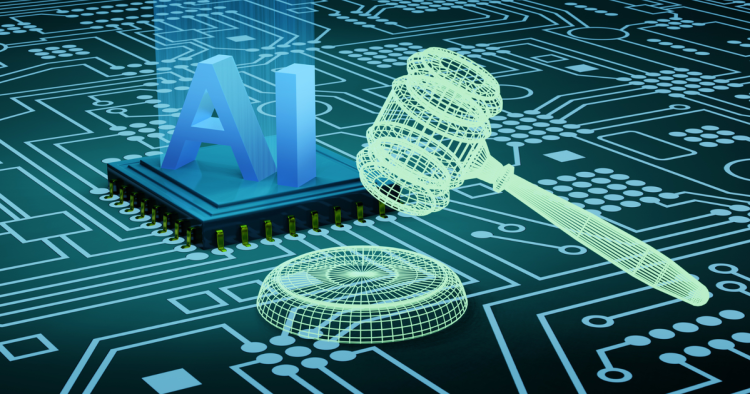In recent years, we’ve witnessed an incredible transformation in the field of artificial intelligence. From self-driving cars to chatbots that respond with surprising empathy, AI is beginning to demonstrate abilities that mimic human thinking. But what would it really mean if AI could learn to think exactly like us? In this article, we’ll explore the implications of this scenario — the exciting possibilities, the potential risks, and the broader ethical and philosophical questions it raises.
The Dawn of Human-Like AI: A Vision Realized
Artificial intelligence, once a far-fetched concept in the realm of science fiction, has come a long way since its inception. Early AI systems were designed to perform specific tasks — like playing chess or solving mathematical problems. These systems followed predetermined rules and algorithms. However, today’s AI, particularly machine learning (ML) and deep learning (DL) models, are able to learn from vast datasets, recognizing patterns and making predictions with astonishing accuracy.
The dream of creating AI that can think like humans has always been linked to the field of artificial general intelligence (AGI). Unlike narrow AI, which is specialized and task-oriented, AGI aims to develop machines that possess the ability to reason, learn, and apply knowledge across a broad range of activities, much like a human would.
But what would it actually look like if AI achieved this level of human-like thinking? Would machines become indistinguishable from people? Would they have the capacity to feel, to reason ethically, or even to have their own desires and motivations? Let’s delve deeper into these questions.
The Cognitive Revolution: How AI Mimics Human Thinking
At the core of human thinking is the brain — a biological organ capable of processing vast amounts of information and making decisions based on complex emotional, sensory, and cognitive inputs. For AI to replicate this process, it must not only analyze raw data but also simulate the intricate network of neural connections that occurs in the brain.

Artificial neural networks (ANNs), a cornerstone of modern AI, are inspired by the structure of biological neurons. These networks consist of layers of interconnected nodes (or “neurons”), which process information and “learn” by adjusting the weights between them based on feedback from the environment. By training these networks with large datasets, AI systems can develop the ability to perform complex tasks, from image recognition to language translation.
However, despite these advances, AI still falls short of replicating the full scope of human cognition. Humans have an innate ability to generalize knowledge across vastly different domains, something AI struggles with. While AI can excel in specific tasks (e.g., playing a game of Go), it still lacks the fluid adaptability of human intelligence. This is where the quest for AGI enters the picture — the desire to create an AI system that can reason, learn, and understand the world in a way that mirrors human thought.
The Potential Benefits of Human-Like AI
The pursuit of AI that thinks like humans is driven by a vision of a future where machines can augment human capabilities in transformative ways. Let’s explore some of the most promising benefits:
- Enhanced Creativity and Innovation
AI that can think like humans could push the boundaries of creativity. Imagine machines that are capable of not only understanding existing knowledge but also generating new ideas, art, and scientific breakthroughs. These AI systems could collaborate with humans to solve complex problems and explore uncharted territories, much like how human creativity often arises from diverse perspectives. - Improved Decision Making
Human decision-making is often influenced by emotions, biases, and limited information. AI with human-like thinking could bring rationality and objectivity to decision-making processes. By simulating human judgment, AI systems could offer more accurate predictions, optimize business strategies, or even help policymakers craft more effective laws and regulations. - Personalized Healthcare
One of the most exciting applications of human-like AI is in healthcare. An AI that understands human biology on a deep level could offer personalized treatment recommendations, predict disease outbreaks, and even detect illnesses at their earliest stages. By integrating emotional and psychological factors, AI could help create more holistic treatment plans that address the full spectrum of human health. - Advanced Emotional Intelligence
AI that can understand human emotions and respond empathetically could revolutionize industries like customer service, therapy, and education. Machines that recognize and interpret emotional cues — from facial expressions to tone of voice — could offer more personalized and effective support, improving the overall human experience in countless ways.
The Ethical Dilemmas and Risks
While the potential benefits of human-like AI are exciting, they also come with significant ethical dilemmas and risks. Let’s consider some of the most pressing concerns:
- Loss of Human Autonomy
As AI systems grow more capable of making decisions on behalf of humans, there is a growing concern about the loss of human autonomy. If AI can make better decisions than humans, will we trust it too much? Will it lead to a future where humans relinquish control over critical aspects of their lives? The question of who is responsible for decisions made by AI — and whether we lose our ability to make choices altogether — is one of the most contentious ethical issues surrounding this technology. - Bias and Inequality
AI systems are only as good as the data they are trained on, and if that data is biased, the resulting AI can perpetuate harmful stereotypes and inequalities. For example, facial recognition technology has been shown to have higher error rates for people with darker skin tones, leading to concerns about racial bias. As AI becomes more human-like, it is critical to ensure that it reflects a fair and equitable understanding of the world. - Loss of Privacy
With AI systems capable of learning and mimicking human behaviors, privacy becomes a major concern. AI could potentially have access to vast amounts of personal data, including emotional responses, social interactions, and even thoughts (via brain-computer interfaces). This raises questions about consent, surveillance, and the boundaries between personal privacy and the use of data for machine learning. - Existential Risk
The idea of AI becoming self-aware and surpassing human intelligence — often referred to as the “singularity” — is a subject of heated debate among scientists and technologists. If AI reaches a point where it can think and reason independently of human influence, there is a risk that it could act in ways that are harmful to humanity. Whether it’s through unintended consequences, power imbalances, or deliberate actions, the existential risks of AGI are not to be taken lightly.

A Human-Like AI in the Real World
As AI technology continues to evolve, we can expect more sophisticated systems that closely resemble human thinking. Already, AI is being integrated into industries ranging from healthcare to entertainment, where it’s improving processes and making tasks more efficient. However, we are still a long way from creating AI that fully replicates human cognition.
The most advanced AI systems today, such as GPT-4 (the model you’re interacting with), can simulate human conversation and generate text based on patterns in data, but they lack true understanding and consciousness. While they can produce text that seems human-like, they are still far from having thoughts, emotions, or self-awareness in the way humans do.
In practical terms, the road to human-like AI will likely involve incremental steps rather than a sudden breakthrough. Innovations in fields like neuromorphic computing, quantum computing, and bio-inspired algorithms may pave the way for more advanced, human-like thinking machines. However, much like human development, it will take time, experimentation, and careful consideration of the ethical implications.
The Future of Human-Like AI: A Balanced Perspective
The dream of creating AI that thinks like humans is both awe-inspiring and fraught with challenges. While the potential benefits are immense, they must be carefully balanced with an awareness of the risks involved. As we move closer to this future, it’s crucial that we engage in open dialogue about the ethical, social, and political ramifications of advanced AI.
We must ensure that AI serves humanity’s best interests, remains accountable, and does not threaten our fundamental rights or autonomy. Human-like AI could usher in a new era of technological advancement — one that, if handled wisely, could amplify our capabilities and improve our quality of life. However, we must tread carefully and make decisions that prioritize fairness, justice, and the well-being of all.
Conclusion
What happens when AI learns to think like humans? It opens up a world of possibilities — some exhilarating, some terrifying. The potential for innovation is limitless, but so too are the ethical questions that need to be addressed. As we move toward a future where AI becomes increasingly human-like, it is essential that we shape this evolution with care, transparency, and a focus on the greater good.
The journey to human-like AI is a reflection of our own desire to push the boundaries of what’s possible. But, just as we’ve learned from our own development, this journey requires wisdom, responsibility, and foresight.











































